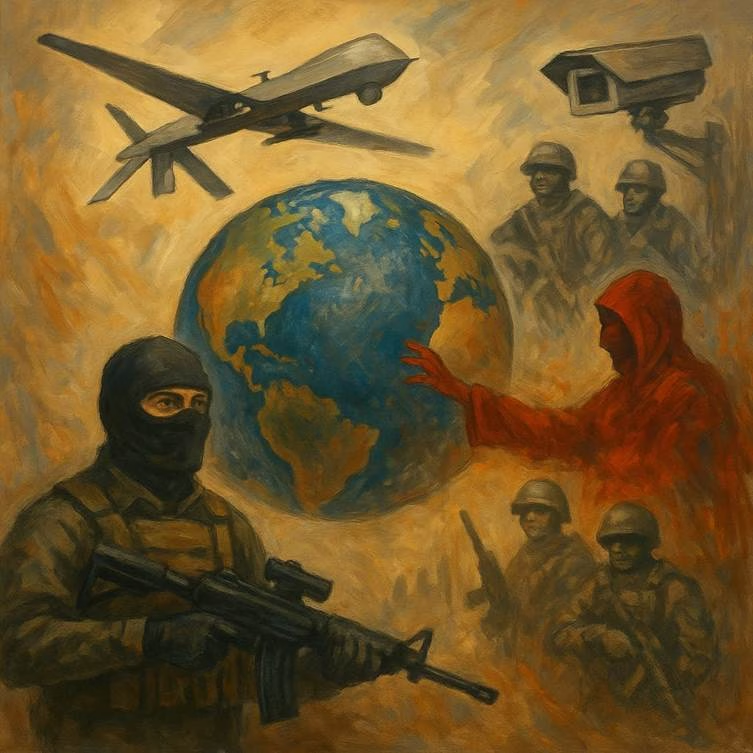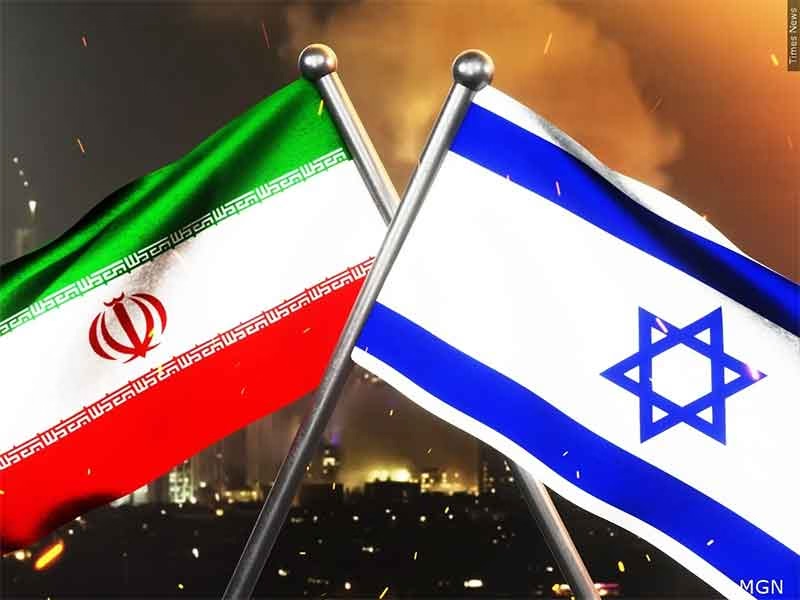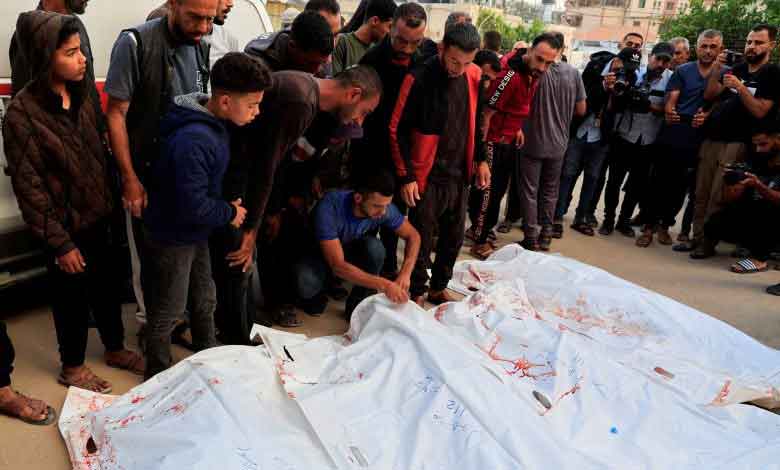Terrorism today is neither ideologically monolithic nor geographically confined. It thrives in a multipolar world riddled with digital disinformation, proxy conflicts, and porous borders. As such, state responses have evolved beyond conventional retaliation to embody full-spectrum counterterror doctrines—flexible, technologically enabled, and embedded within each state’s geopolitical ethos. This essay examines the strategic anatomy of counterterrorism across key nation-states while reflecting on how these varied doctrines provoke adaptations within terrorist networks themselves.

United States: Forward Defense and Full-Spectrum Dominance
The U.S. strategy, especially since 9/11, has reflected a doctrine of preemptive engagement. The National Security Strategy (2002) codified America’s right to anticipatory self-defense, ushering in a wave of extraterritorial counterterror operations. From the decapitation strike on Osama bin Laden (Operation Neptune Spear, 2011) to drone strikes in Yemen, Pakistan, and Somalia, U.S. counterterrorism embodies Full-Spectrum Dominance across kinetic and cyber domains.
Special Operations Forces (SOF), such as JSOC’s Tier One units, operate within a Find-Fix-Finish-Exploit-Analyze (F3EA) loop, combining ISR assets, HUMINT, and precision drone warfare. UAVs like the MQ-9 Reaper enable persistent surveillance and remote precision strike capabilities. Meanwhile, digital forensics and network exploitation techniques serve as tools for identifying radicalized actors and disrupting transnational linkages.
Yet these doctrines are not static. Terrorist organizations have increasingly adopted low-signature, decentralized networks to counter America’s technological edge. The emergence of lone-wolf attackers and encrypted communication platforms like Telegram and Threema illustrates this adaptation.
Israel: Deterrence by Punishment and Intelligence Supremacy
Israel’s counterterrorism strategy is rooted in Deterrence by Punishment—a model premised on imposing disproportionate costs on adversaries. The IDF, Shin Bet, and Mossad conduct preemptive neutralizations and targeted killings under robust legal and intelligence frameworks. A prime example was the 2020 elimination of Islamic Jihad commander Baha Abu al-Ata in Gaza, following ISR convergence.
Israel’s air defense umbrella—Iron Dome, David’s Sling, and Arrow—forms a multi-tiered intercept capability that neutralizes rocket attacks, particularly from Hamas and Hezbollah. Its doctrine of mowing the grass, a term coined by Israeli strategists, involves routine tactical strikes to degrade militant capacity without aiming for permanent resolution.
In response, groups like Hamas and PIJ have developed tunnel warfare, asymmetric rocket saturation, and human shield tactics to complicate Israel’s legal and operational calculus. These adaptations reflect how non-state actors strategically innovate to offset Israel’s technological and intelligence advantage.
Russia: Strategic Depth and Hybrid Counterinsurgency
Russia’s response to terrorism, especially in the North Caucasus, combines shock-and-awe tactics with psychological warfare. Spetsnaz and FSB units employ deep penetration raids and signature strikes on insurgent leadership—seen during operations in Dagestan and Chechnya in the early 2000s.
In Syria, Russia has projected power under the banner of counterterrorism, supporting Assad’s regime against ISIS and other rebel factions. The doctrine emphasizes strategic extraterritoriality—using the CT rationale to secure influence zones. Its toolkit includes electronic warfare (EW), cyber disruption, and deniable force projection via PMCs like the Wagner Group.
Islamist groups have responded by dispersing into ungoverned spaces, exploiting Russian thresholds for civilian collateral, and using social media for narrative warfare. The spread of insurgents from Syria to African theatres reflects a calculated franchise dispersal strategy to dilute Russian focus.

India: Proactive Defense and Sub-Conventional Balancing
India’s counterterror doctrine has shifted markedly post-2016. The surgical strikes across the Line of Control and the 2019 Balakot airstrikes mark the beginning of a Proactive Kinetic Doctrine—a calibrated departure from strategic restraint. These actions reflect India’s attempt to establish deterrence through limited escalation.
Specialized units like the Para SF and NSG execute high-risk urban counterterror ops while the Indian Air Force’s Mirage-2000s showcased the use of air interdiction for cross-border retribution. On the internal front, India’s doctrine blends population-centric COIN in Kashmir and Central India with kinetic suppression of armed insurgents.
In reaction, Pakistani-backed terror groups like Jaish-e-Mohammed and Lashkar-e-Taiba have embraced sleeper cell models, encrypted communication, and modular training camps in response to India’s increased ISR and strike capabilities. The use of proxy denial—where operatives are unlinked from parent organizations—has also increased to frustrate attribution and retaliation.
China: Preemptive Digital Repression and Internal Security Architecture
Beijing’s CT response is rooted in regime security, particularly in Xinjiang and Tibet. It employs total domain awareness using AI surveillance, biometrics, and predictive policing. The use of Integrated Joint Operations Platform (IJOP) and re-education facilities illustrates a digital panopticon model.
Externally, China’s foray into CT partnerships with Pakistan under the CPEC framework reflects its concern over Uyghur-linked jihadists in Balochistan. The PLA is also integrating non-war military operations (NWMO) into its strategic playbook, enabling security deployments under peacetime mandates.
Uyghur militant groups, notably TIP (Turkistan Islamic Party), have adapted by aligning with global jihadist networks like Al-Qaeda and embedding themselves in broader Middle Eastern conflicts. The transnational camouflage strategy complicates Beijing’s attribution and weakens justification for international crackdowns.
Europe: Intelligence Harmonization and Urban Civil-Military Fusion
Europe’s CT strategy post-2015 has centered around resilience building, urban troop deployment, and transnational intelligence fusion. France’s Operation Sentinelle integrates armed forces into urban environments, deploying thousands of soldiers in Quick Reaction Force (QRF) configurations.
Intelligence coordination via Europol and the Schengen Information System aims to overcome sovereignty barriers, although gaps in real-time interoperability persist. The EU’s Radicalisation Awareness Network (RAN) and cyber deradicalization programs reflect a societal resilience model, aimed at long-term containment.
Islamist networks, many of which are European-born, have pivoted to micro-cell structures and online indoctrination, evading mass surveillance through anonymized networks and encrypted peer-to-peer communication. Their adaptation reflects a conscious shift toward symbolic, high-casualty urban attacks, maximizing psychological disruption.
Conclusion: Elastic Doctrines, Adaptive Enemies
Modern counterterrorism is a contest of doctrinal elasticity versus asymmetric innovation. As states adopt high-tech, multi-domain strategies, terror networks respond with dispersion, encryption, and ideological camouflage. The battleground now spans both terrain and terrainlessness—kinetic strikes and narrative spaces, drone platforms and TikTok feeds.
Success in this domain is no longer determined by raw firepower, but by strategic agility, intelligence preemption, and interagency fusion. The future of counterterrorism lies not in static doctrine but in trans-theatre adaptability, capable of responding to threats that mutate faster than the structures built to contain them.
Subscribe to Our Newsletter
Get the latest CounterCurrents updates delivered straight to your inbox.
Ashish Singh has finished his Ph.D. coursework in political science from the NRU-HSE, Moscow, Russia. He has previously studied at Oslo Metropolitan University, Norway; and TISS, Mumbai.














































